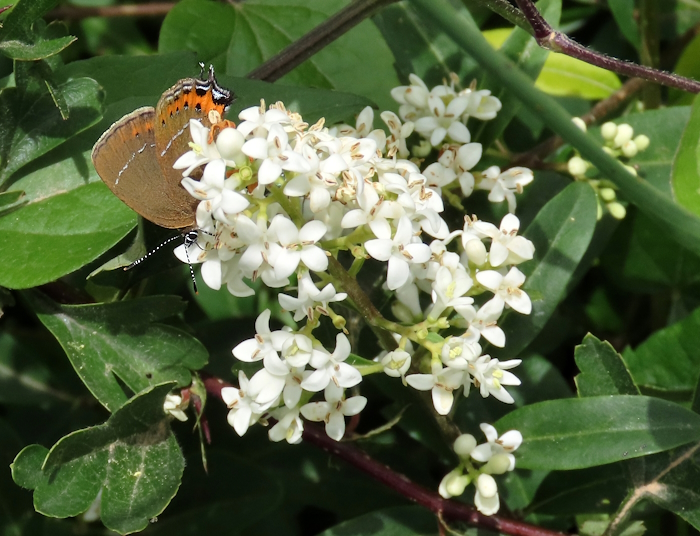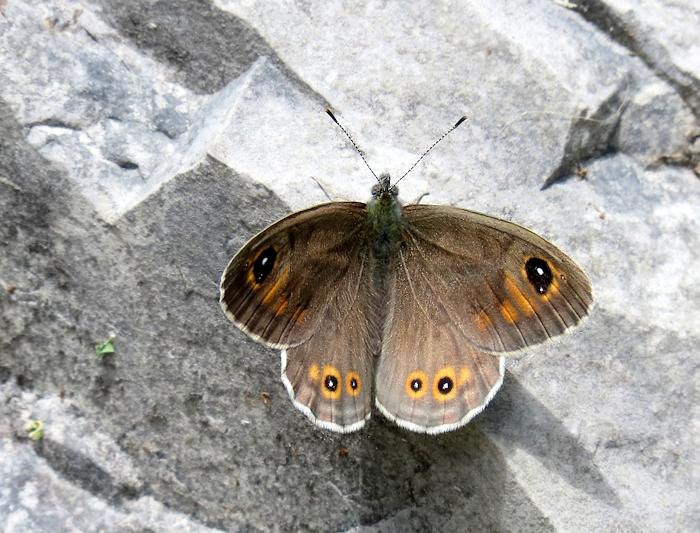I hope you have a great trip, Paul. In general, the weather's better on the Italian side, so you may find things less disastrous than here!
I headed off to a favourite
Satyrium site near Yverdons-les-Bains today, with black hairstreak in mind. Normally, this species emerges at the end of May, so I confidently expected it to be on the wing now. The weather was sunny but a little windy and I arrived on site at 11h30 - normally a good time to see hairstreaks tumbling over the blackthorn. But there were none. In two hours, I saw not a single hairstreak in flight. By one hour into the visit, I had decided there just weren't any
Satyrium at all, but then just while I was photographing a pearly heath on the blackthorn, I spotted a white-letter hairstreak creeping over a privet head:

Amazing! It's actually very early for white-letter hairstreaks, so I wondered if the blacks were already flown, though it seemed impossible.
From then on, I examined every privet head, and by complete chance spotted a second
Satyrium hairstreak on another of them (I was trying to photograph a small heath this time!). It was a sloe hairstreak. It was backside on to me and impossible to photograph, so I reached sideways with one arm through some bramble and got a single, rubbish shot before my sweatshirt tripped the bramble and it flew off:

Two
Satyrium species, both found by pure luck.
Finally, an hour and a half into my visit, I found a third
Satyrium, again creeping over privet in an inaccessible part of a bush. This time, it was a black hairstreak:


Extraordinary. Just three hairstreaks in two hours, and three different species. It is really hard work this year!!
There was very little flying altogether. Pearly heaths were the commonest butterfly, and the only thing to be seen flying over the blackthorn:


There were a few black-veined whites, a few meadow browns, a few (very few) Adonis blues, a handful of small heaths and a small tortoiseshell or two. Here is a black-veined white resting on blackthorn:

I finished the trip with a woodland walk, during which I saw precisely zero butterflies - not even a speckled wood or green-veined white - despite lovely sunny weather and lots of nectar plants along the track.
Guy


































































